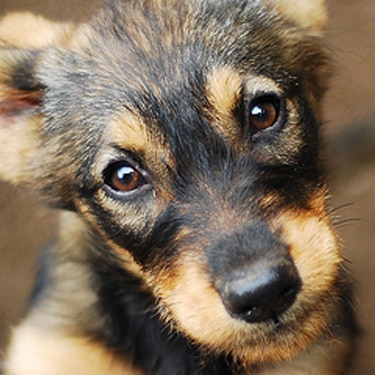
-
Find the right food for your petTake this quiz to see which food may be the best for your furry friend.Find the right food for your petTake this quiz to see which food may be the best for your furry friend.Featured products
 Hill's Science Diet Mature Adult Healthy Cuisine Chicken & Vegetables Stew Dog Food
Hill's Science Diet Mature Adult Healthy Cuisine Chicken & Vegetables Stew Dog FoodDelicious roasted chicken paired with tender vegetables in a succulent stew
Shop Now Hill's Science Diet Adult Perfect Weight Vegetables and Salmon Stew Dog Food
Hill's Science Diet Adult Perfect Weight Vegetables and Salmon Stew Dog FoodOver 70% of dogs lost weight within 10 weeks when fed this nutrition
Shop Now Hill's Science Diet Adult Healthy Cuisine Chicken & Vegetables Stew Dog Food
Hill's Science Diet Adult Healthy Cuisine Chicken & Vegetables Stew Dog FoodDelicious roasted chicken paired with tender vegetables in a succulent stew
Shop NowFeatured products Hill's Science Diet Kitten Chicken & Vegetables Stew Cat Food
Hill's Science Diet Kitten Chicken & Vegetables Stew Cat FoodPrecisely balanced nutrition with the delicious taste of minced liver & chicken to support 5 essential building blocks for lifelong health
Shop Now Hill's Science Diet Adult Perfect Weight Vegetables and Chicken Stew Cat Food
Hill's Science Diet Adult Perfect Weight Vegetables and Chicken Stew Cat FoodOver 70% of cats lost weight within 10 weeks when fed this nutrition
Shop Now Hill's Science Diet Adult Perfect Weight Salmon and Vegetables Stew Cat Food
Hill's Science Diet Adult Perfect Weight Salmon and Vegetables Stew Cat FoodOver 70% of cats lost weight within 10 weeks when fed this nutrition
Shop Now -
Dog
- Dog Tips & Articles
-
Health Category
- Weight
- Food & Environmental Sensitivities
- Urinary
- Digestive
- Joint
- Kidney
-
Life Stage
- Puppy Nutrition
- Adult Nutrition
- Senior Nutrition
Cat- Cat Tips & Articles
-
Health Category
- Weight
- Skin & Food Sensitivities
- Urinary
- Digestive
- Kidney
-
Life Stage
- Kitten Nutrition
- Adult Nutrition
Featured articles The Science Behind Our Love for Pets
The Science Behind Our Love for PetsLearn the scientific reasons why we have such strong connections with our pets, and what science says about the love between humans and our furry friends.
Read More What Is Littermate Syndrome? Pet Adoption Guide
What Is Littermate Syndrome? Pet Adoption GuideLearn more about littermate syndrome in dogs and cats and how to successfully navigate adoption and early socialization processes.
Read More How to Properly Mix Wet & Dry Pet Foods
How to Properly Mix Wet & Dry Pet FoodsAn Orange cat eating from a bowl filled with mixed food
Read More -
Kidney health for dogs
Kidney health for dogs
What is kidney failure in dogs?
Kidney failure is a condition that damages your dog’s kidneys, leading to kidney or renal disease. The most common form is known as Chronic Kidney Disease (CKD), which affects about 1 in every 10 dogs.1
Your dog’s kidneys are vital to removing waste substances from the bloodstream and maintaining the balance of fluid and minerals within the body. But if the kidneys can’t do their job, the result could be life-threatening for your dog.
What causes kidney disease in dogs?
There are two main categories of kidney failure in dogs: acute and chronic. Signs of acute renal failure usually manifest over a week or month’s time, while chronic renal failure is present for a longer period. Several factors may be involved that could increase your dog’s risk of developing kidney disease:




Early detection of kidney failure in your dog
Signs of serious illness do not typically appear until after 75% of kidney function is already lost, so the sooner kidney disease is diagnosed, the more time there is to address the underlying cause or slow the disease’s progression. CKD is progressive and irreversible, but your veterinarian can help provide long-term care and show you how to track signs in older dogs.
What are the signs of kidney disease in dogs?
The signs of early-stage kidney disease are not visible. On diagnosis, CKD has already been present for some time but may be managed with the help of vet-approved dog food for kidney disease. Signs of late-stage kidney disease tend to be similar but are far more noticeable to pet parents.



















Nutrition for dogs with kidney disease
If your dog has kidney disease, the nutrition formulated for them can help make an impact on their lives. Specially formulated nutrition for dogs with kidney disease can be beneficial by having less protein and phosphorous than other pet foods. Phosphorus restriction can lessen the severity of the symptoms and progression of kidney damage, while controlled, high-quality proteins can help restore normal acid-base levels.
What about nutritional yeast for dogs with kidney disease?
While it has gained some popularity online, yeast is relatively high in phosphorus, which could be a concern for dogs with CKD. Similarly, many websites now propose creating a raw food for dogs with kidney disease but fail to mention the range of factors to consider, such as contamination risks, providing the right balance of nutrients, and the overall cost. When looking into nutritional options for dogs with kidney disease, it’s always best to get a specific recommendation from your veterinarian.
Nutrition for dogs with kidney disease
If your dog has kidney disease, the nutrition formulated for them can help make an impact on their lives. Specially formulated nutrition for dogs with kidney disease can be beneficial by having less protein and phosphorous than other pet foods. Phosphorus restriction can lessen the severity of the symptoms and progression of kidney damage, while controlled, high-quality proteins can help restore normal acid-base levels.
What about nutritional yeast for dogs with kidney disease?
While it has gained some popularity online, yeast is relatively high in phosphorus, which could be a concern for dogs with CKD. Similarly, many websites now propose creating a raw food for dogs with kidney disease but fail to mention the range of factors to consider, such as contamination risks, providing the right balance of nutrients, and the overall cost. When looking into nutritional options for dogs with kidney disease, it’s always best to get a specific recommendation from your veterinarian.
Related products

This weight management and mobility support dog food was created with Hill’s unique understanding of the biology of overweight dogs.

Healthy soft baked chicken flavor dog treats are a delicious complement to many Prescription Diet Dog Foods

Healthy and delicious Metabolic dog treats help support weight loss and maintenance

Hill's Science Diet Sensitive Stomach & Skin Grain Free dry dog food is gentle on stomachs. Nourishes skin & promotes a lustrous coat.
Related articles

Dog weight control is a key part of caring for your pup. Learn about weight management dog food and other ways to help keep your dog at a healthy weight.

What is dog diarrhea, exactly? Discover the signs, causes and potential treatment options depending on your dog's diagnosis.

If you have a puppy with an upset stomach, you want to help them feel better fast. Discover the signs and causes of your puppy's upset stomach and how to support the puppy's gut health.

Learn why kidneys are so important, what are the signs of kidney failure, and how to support kidney health for dogs to ensure your pup's well-being.
References: 1Lulich JP, Osborne CA, O’Brien TD, Polzin DJ. Feline renal failure: questions, answers, questions. Compend Contin Educ Pract Vet. 1992;14(2):127–153. Brown SA. Renal dysfunction in small animals. The Merck Veterinary Manual website.

